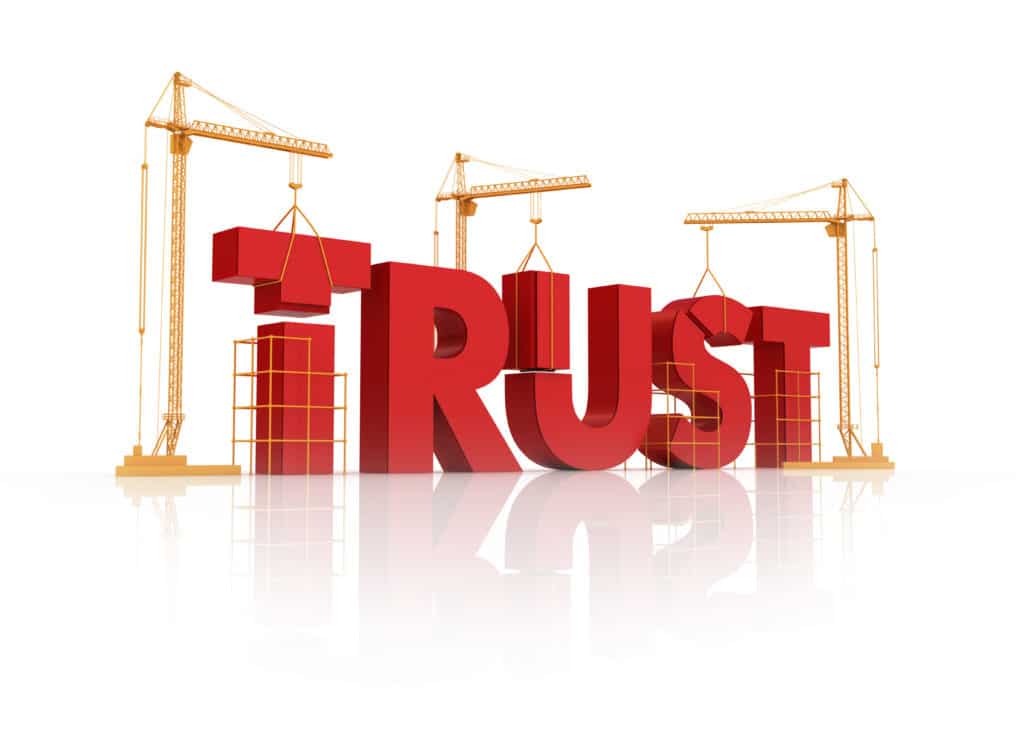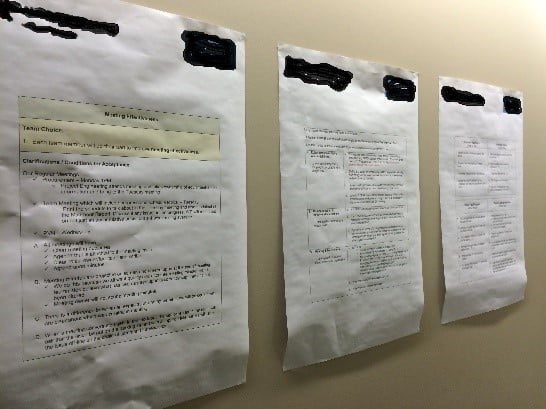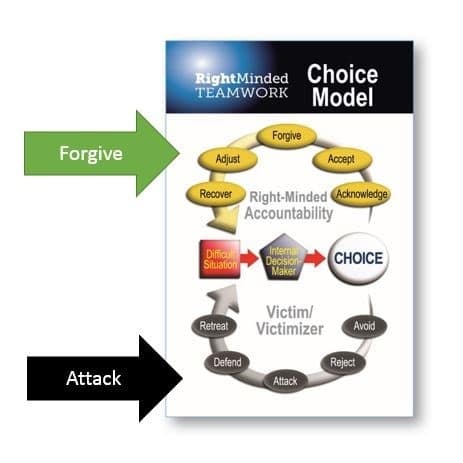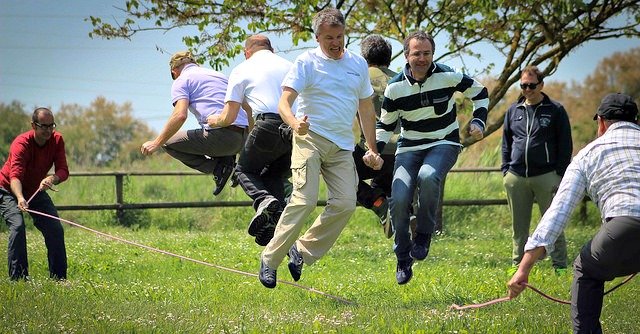Trust & Forgiveness
These teammates did not trust each other. Then, they decided to try forgiveness.
It WORKED!
Now, they trust each other to collaborate and to achieve customer satisfaction. These teammates succeeded in practicing forgiveness in the workplace.
In this article, I will share this marvelous story.
Learn how these teammates let go of their debilitating bickering, ceased their attack comments, and embraced the right-minded attitudes and behaviors that helped them rise above their silly and self-created battleground.
Before I share the story, let us discuss one essential concept related to forgiveness: Choice.
Forgiveness in the Workplace
You Only Have Two Choices: forgive or attack.
The Right-Minded Choice Model teaches that we only have two choices. However, there are many variations of those two.
When difficult team situations occur, like the one in this story, you either choose to demonstrate accountable, responsible, and right-minded behaviors or you react as a victim or victimizer.
The former choice is the only sane response to all circumstances, especially difficult team situations. The ladder is an obvious wrong-minded choice.
Why? Because teammates who demonstrate the right attitudes and behaviors find solutions to problems. They use those attitudes, behaviors, and attributes every day.
Wrong choices only seek to blame and punish teammates. That guarantees solutions are not found because teammates are busy defending themselves.
Forgiveness in the Workplace in Action
In a recent post, Presenting Proof is The Only Way to Convince Leadership That Real Team Building Beats Silly Team Bonding Games, I used this same story to explain how real-world team building is far better than silly team games.
However, this story is also an equal justification for why you want to practice teammate forgiveness.
In that article, I shared more of the full story. However, here I will briefly describe the team, their lack of trust issue, and how they resolved it.
The Team
This was a major multi-national project management team consisting of a contractor and a customer.
There were 35 people in the extended leadership team.
By the way, the guys jumping rope were not in this team. Whew!
They were locked in an attack-defend culture. There were many dysfunctional teamwork issues.
- lack of trust,
- poor work quality,
- process mistakes,
- costly rework,
- finger-pointing, and blame.
Lack of Trust – Their Issue

Their lack of trust was most evident in what is called the Management of Change process (MOC).
If you are in project management, you know MOC.
For those who are not in project management, here is a short explanation.
MOC is a change order to the original plan. MOC’s take time and can cost lots of money.
Ideally, both the contractor and the customer come to a mutual agreement to a) do the change order, and b) agree on the added time and cost.
In this story, these teammates were far from that ideal.
The customer had grown to distrust the contractor’s estimate for more MOC man hours because of the appearance of inflated estimates.
In turn, the contractor grew to distrust the customer’s ability to understand the complexity of design engineering. Therefore, they believed the customer was incapable of understanding the higher MOC costs.

Here was one of their typical dysfunctional conversations before the team-building workshop.
How Distrust Was Communicated
Contractor: We need 1700 more man-hours for MOC #7.
Customer: That’s too many hours. You did a similar MOC #2 for half that amount. Why do you need more? [Attack]
Contractor: It’s more complex because the “as-is” drawings you gave us were wrong. [Defend]
Customer: If that were true, it certainly should not take twice as many hours! [Attack]
Contractor: How can you say that? We’re the engineers. We know how long these tasks take. [Attack & Defend]
Customer: I’m a professional engineer, too. I know how long these tasks should take. [Defend]
Building Trust – Before, During, After Workshop
Before the Workshop
Before the team building workshop, as their facilitator, I spoke privately with all teammates.
I helped them mentally and emotionally prepare to have a right-minded intelligent discussion about MOCs.
I was able to convince them, at least temporarily, that all teammates had behaved in ways that created distrust.
That acceptance helped them to cautiously agree that the only way to recover from this distrust would be to create Work Agreements to fix the broken MOC process.
Therefore, they would have to forgive themselves and others for past mistakes before they could successfully create Work Agreements.
During the Workshop
During the workshop, teammates had a successful, straightforward, and non-confrontational discussion.

They created several Work Agreements that all teammates declared would help resolve this difficult team situation if they actually followed the agreements going forward.
They believed that so strongly that they posted their Work Agreements in the hallway where everyone could see them.
After the Workshop
Immediately after the workshop, about a dozen teammates from both contractor’s and customer’s sides stopped at the pub for a drink and conversation.
There, teammates continued to express how hopeful they were of the Work Agreements.
One teammate wrote me an email afterward saying several people that evening, from both the contractor and the customer apologized to each other for past behaviors that caused distrust.
THAT IS Forgiveness in the Workplace.
Once again, at the pub, they recommitted to live by their new agreements.
Six months later, one teammate said to me in follow-up interviews,
“Before, all we wanted to do was find a way to leave team meetings. Now it’s the opposite. We are in team meetings to find solutions. It’s been a huge change. We are learning to trust one another!”
For this team, the MOC process was one specific dysfunction that illustrated how the attack-defend cycle, or the un-forgiveness culture caused this team to be stuck.
I hope it is evident how forgiveness was the first step in creating functional Work Agreements that ensured this team recovered from its self-created, trustless battleground.
This Story is Justification for Forgiveness in the Workplace.
Remind yourself and your teammates: Forgiveness will always be better for your business than attacking.
When teammates perceive and understand the value of forgiveness as a real and justified method for getting un-stuck, they will achieve Right-Minded Teamwork.
That is why Right-Minded Teamwork is defined as a business-oriented plus a psychological approach to team building. One where acceptance, FORGIVENESS, and adjustment are teammate characteristics and customer satisfaction is the team’s result.
Ready to Start Using Right-Minded “Forgiveness” in Your Team?
Here are four actions you can take right now.
1. Implement the Choice Model Process in your team.
2. Give your teammates Right-Minded Choice Cards.
3. Download Creating Right-Minded Teamwork in Any Team to begin applying the 5 Elements which are the “home” for teammate forgiveness.
4. Read The Secret of Successful Teamwork: Forgiveness. By Gustavo Razzetti.

To Your Success, Dan
Attribution: Image by Luigi Mengato via CC BY 2.0


Leave a Reply